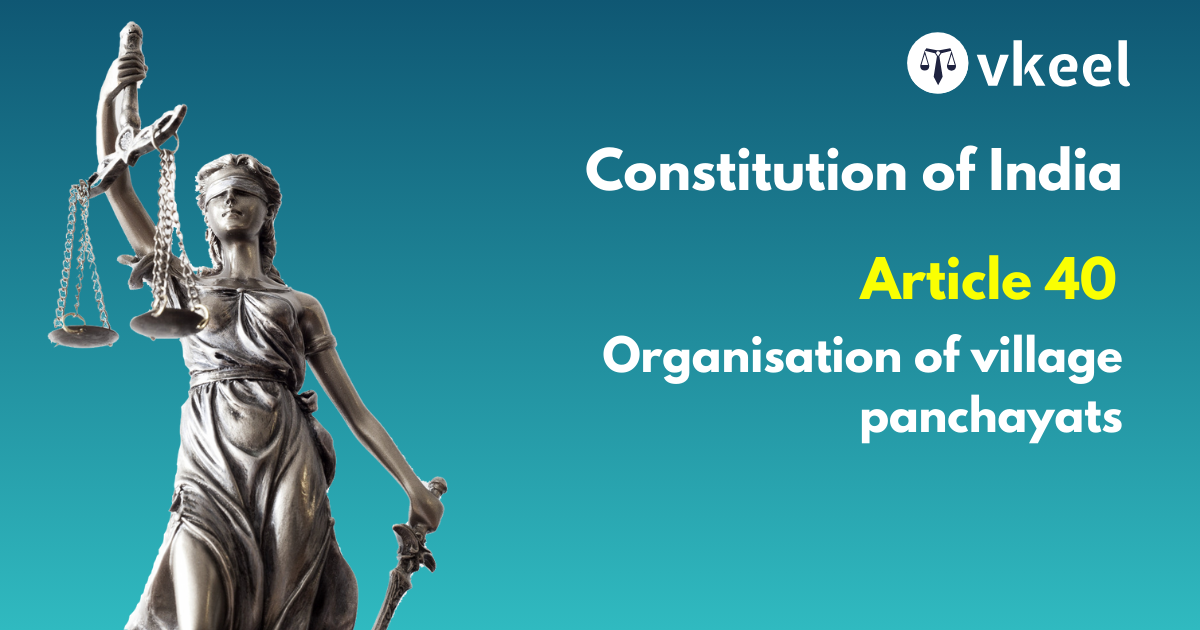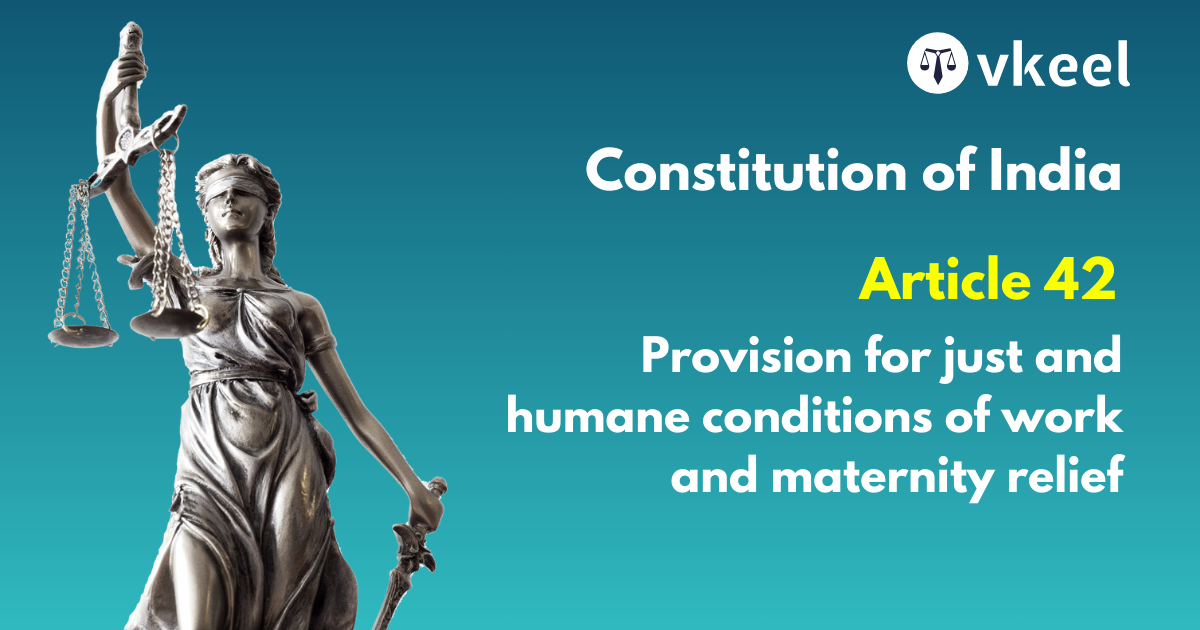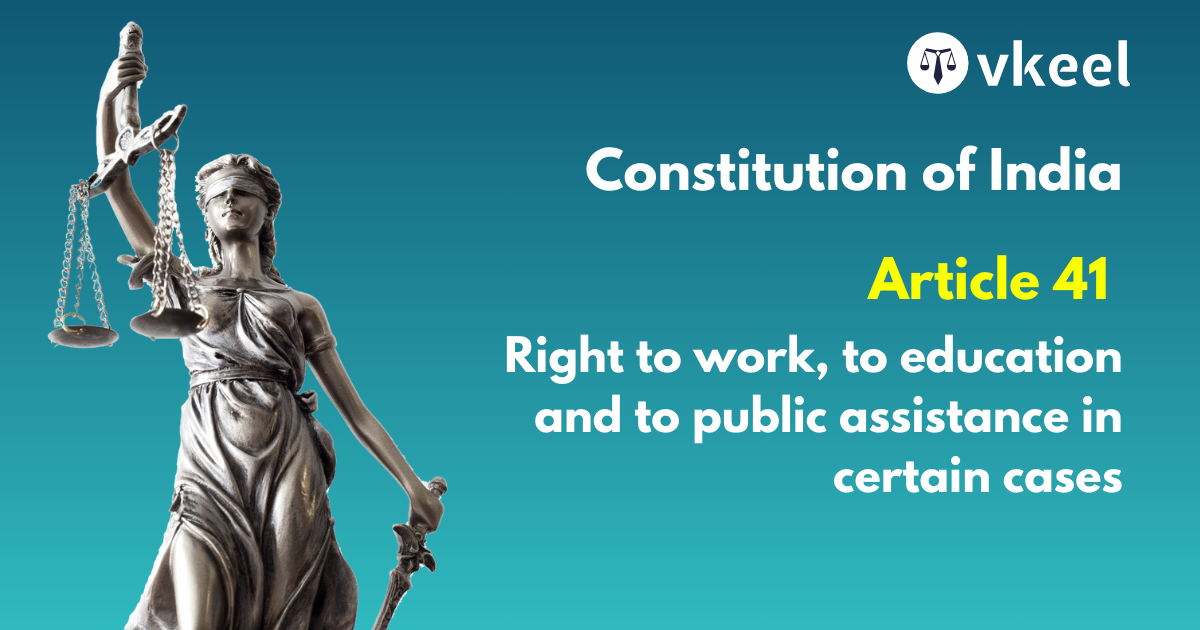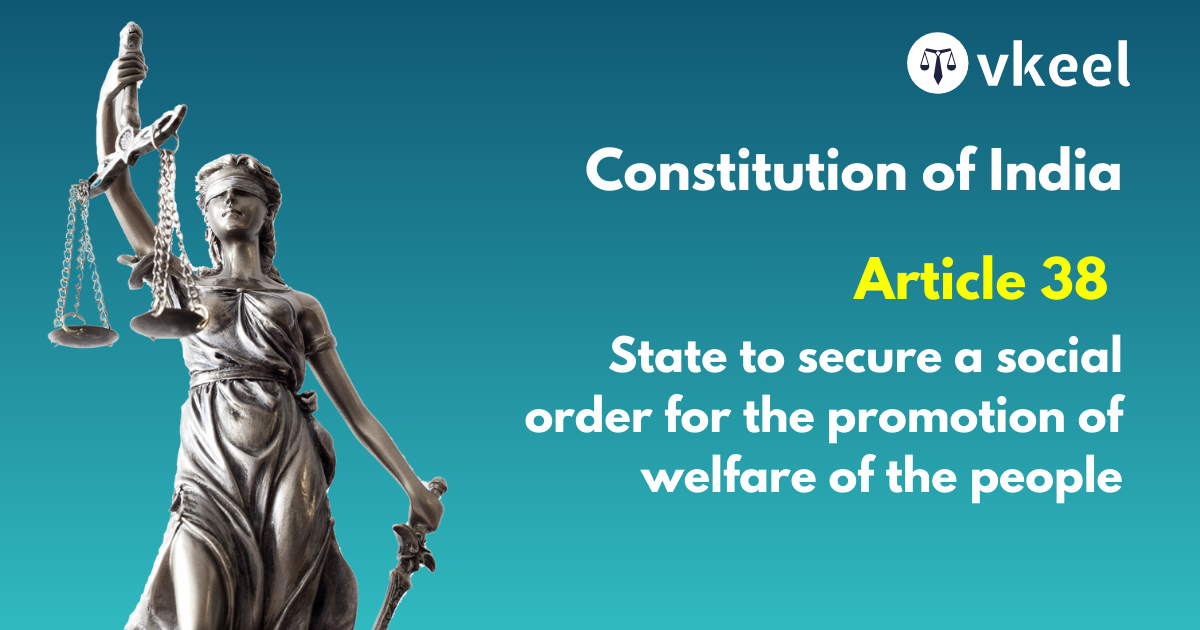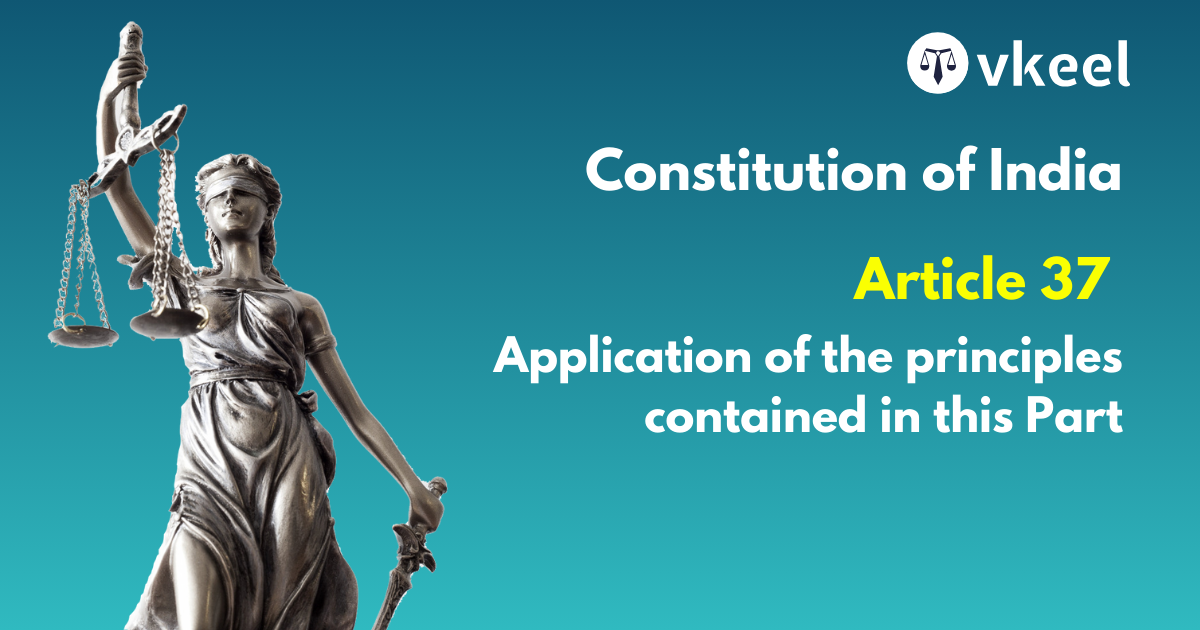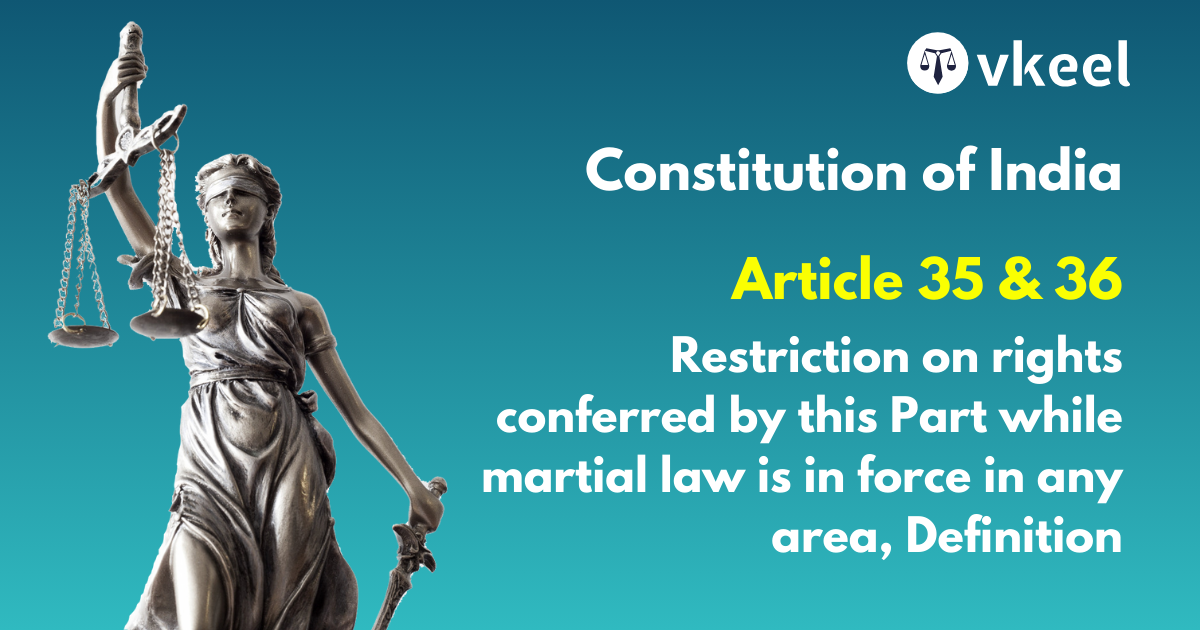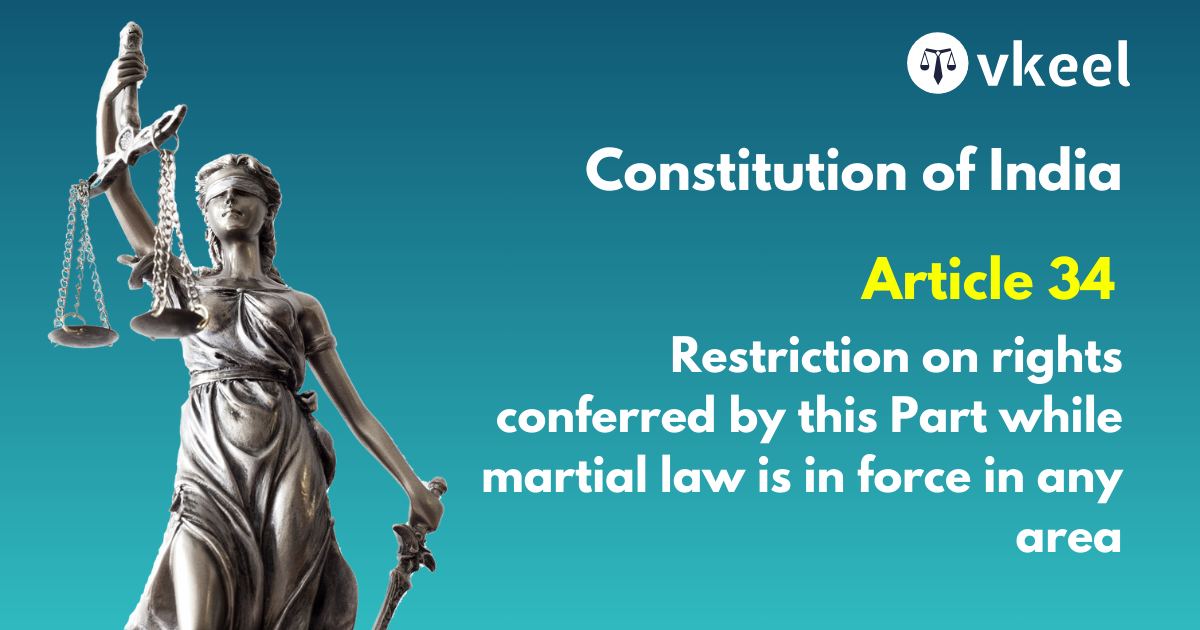Article 40 of the Constitution of India
By Joy Puri
Introduction
“The most preeminent way of governing, is the governance of the self.”
The Article 40 of the Constitution of India envisages about the importance of self-governance in the country. It further encourages the formation of Self governance units which are termed as Panchayats.
Albeit Article 40 being a part of the Directive Principle of the State Policy stands as non-justiciable in the courts of law. What one can decipher out of this is that, these provisions are not enforceable in the Court of Law.
The provision acts as the tool for the promotion of self governance. In which the villages, themselves have to manage their affairs to some extent and thereby boosting the awareness of democracy at the very grassroot level.
The concept of the Panchayati Raj has been ordained below, in the present article.
Article 40 of the Constitution of India
Organisation of village panchayats
The State shall take steps to organize village panchayats and endow them with such powers and authority as may be necessary to enable them to function as units of self-government.
Landmark Case Laws
State of Uttar Pradesh Vs Pradhan Sangh Kshettra Samiti, AIR 1995 SC 1512
The village panchayats are envisaged by article 40 as the base democratic institutions of a pyramid of the democratically organised and functioning self-governing units. This being so, while organising the village panchayats, what is necessary to be kept in mind is (a) that they arc to be the self-governing units at the lowest end of the democratic polity, (b) that being self- governing units, those who arc governed by the said units and for whose benefit they arc going to operate, will have either a direct or an elective indirect representation in them; (c) that they will have an effective say in the conduct of their affairs including its plans, policies and programmes and their execution and (d) that thus they will have not only a sense and satisfaction of participation but also an experience in the governance of their own affairs. As long as the village panchayats are organised complied with bad objectives, the requirements of the said article will have been compiled with both in their spirit and their letter.
N.M. Kheni Vs Manik Rao Patil, AIR 1977 SC 2171
The objective of article 40 is decentralisation and devolution. If that does not happen, power of the people will stand subverted.
What is the system of Panchayati Raj?
The 73rd Amendment Act of 1992 improves the system of Panchayati Raj system by making it a constitutional mandate. It made sure that elections to the Panchayats are held regularly and provided a clear system for their powers and responsibilities arising in furtherance.
The Panchayati Raj system is a form of local self-government in India which certainly focuses on rural areas. The basic crux of enacting this provision was to give people in villages a say in how their community is ran thereby allowing them to make decisions about local issues and needs in their respective communities.
The Panchayati Raj system works on three levels: the village level, the block level, and the district level. Every adult in the village can vote to choose members of the Gram Panchayat, and these elections happen every five years.
At the village level, there is the Gram Panchayat. This is a small group of elected members who represent the villagers and work together to make decisions about things like water supply, road construction, education, and health services.
The top level of the system is the Zila Parishad, which works at the district level. The Zila Parishad oversees all the Panchayat Samitis in its district and takes care of major development projects, such as improving district roads, healthcare facilities, and large-scale irrigation systems. It also makes sure that funds are used properly and efficiently.
Conclusion
It reflects the idea that real democracy starts at the local level, empowering people to participate in decision-making for their communities.
Disclaimer:
The information provided in the article is for general informational purposes only, and is not intended to constitute legal advice or to be relied upon as a substitute for legal advice. Furthermore, any information contained in the article is not guaranteed to be current, complete or accurate. If you require legal advice or representation, you should contact an attorney or law firm directly. We are not responsible for any damages resulting from any reliance on the content of this website.

